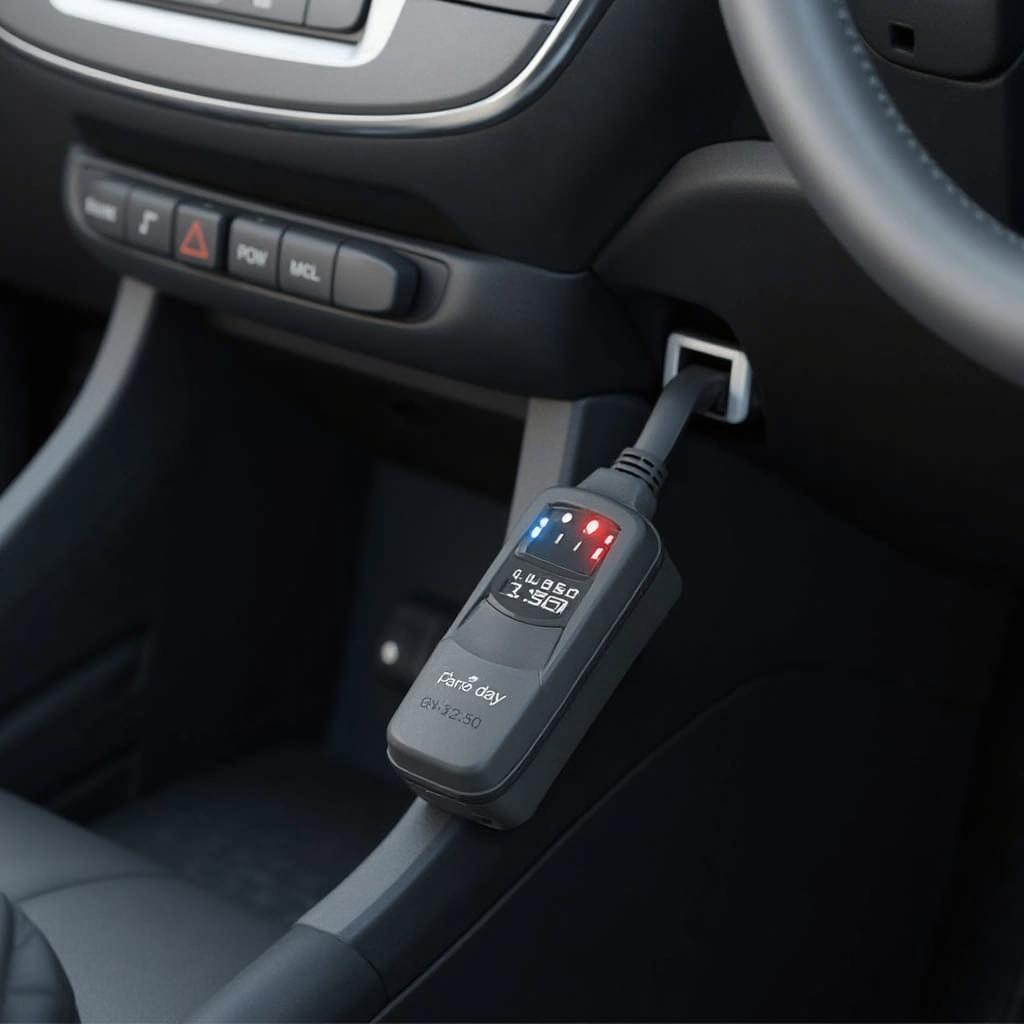Connecting your Panlong Bluetooth OBD2 scanner can seem daunting, but it’s a straightforward process. This guide will walk you through panlong bluetooth obd2 pairing, troubleshooting common issues, and maximizing the potential of your device. We’ll cover everything from initial setup to advanced functionalities, ensuring you can confidently diagnose and monitor your vehicle’s health.
You can find a helpful resource on the Panlong OBD2 scanner app here: panlong obd2 scanner app.
Understanding Your Panlong Bluetooth OBD2 Scanner
Before diving into the pairing process, it’s essential to understand the basics. A Panlong Bluetooth OBD2 scanner is a diagnostic tool that plugs into your car’s OBD2 port, usually located under the dashboard on the driver’s side. It communicates with your smartphone or tablet via Bluetooth, allowing you to access real-time data about your vehicle’s performance. This data can range from simple engine codes to complex sensor readings, providing valuable insights into your car’s health.
Key Features and Benefits
- Real-time diagnostics: Monitor engine performance, fuel economy, and other vital parameters.
- Read and clear trouble codes: Identify and erase check engine lights, saving you trips to the mechanic.
- Emission readiness checks: Ensure your vehicle meets emissions standards.
- Data logging: Track performance data over time to identify trends and potential issues.
- Compatibility with various vehicles: Works with most cars and light trucks manufactured after 1996 (in the US) or 2001 (in Europe).
Step-by-Step Panlong Bluetooth OBD2 Pairing Instructions
Pairing your Panlong Bluetooth OBD2 scanner is generally a quick process. Here’s a detailed guide:
- Locate your vehicle’s OBD2 port. It’s typically under the dashboard on the driver’s side.
- Plug in the Panlong OBD2 scanner. Ensure it’s securely connected.
- Turn on your vehicle’s ignition. You don’t need to start the engine, just turn the key to the “on” position.
- Enable Bluetooth on your smartphone or tablet.
- Open your chosen OBD2 app. Refer to the panlong obd2 android app for compatible options.
- Search for available Bluetooth devices. Your Panlong scanner should appear as “OBDII” or a similar name.
- Select the device and enter the pairing code. The default code is often “1234” or “0000,” but check your scanner’s manual for specific instructions.
- Confirm the pairing on both devices.
Once paired, the app should connect to your scanner automatically each time you turn on your car’s ignition and have Bluetooth enabled.
What if my Panlong OBD2 doesn’t pair? Check your device’s manual and ensure you have the correct pairing code. Also, verify that your OBD2 app is compatible with your specific Panlong scanner model. You might find this review helpful: panlong bluetooth obd2 review.
Troubleshooting Panlong Bluetooth OBD2 Pairing Issues
Sometimes, you might encounter issues during the pairing process. Here are some common problems and solutions:
- Scanner not found: Ensure the scanner is plugged in securely and the car’s ignition is on. Try restarting both your phone and the car.
- Incorrect pairing code: Refer to the scanner’s manual for the correct code.
- App compatibility issues: Ensure your app is compatible with the Panlong scanner. Consider exploring other obd2 android app options.
- Bluetooth connection problems: Try resetting your phone’s Bluetooth connection or clearing the paired devices list.
If you’re looking for an user-friendly OBD2 Android app, check out this link: easy obd2 android.
Maximizing Your Panlong OBD2 Scanner
Once paired, your Panlong scanner can be a powerful tool for understanding and maintaining your vehicle. Experiment with different OBD2 apps to find the one that best suits your needs. Log data regularly to track your car’s performance and identify potential problems early.
“Regularly monitoring your vehicle’s data with an OBD2 scanner can save you significant money on repairs in the long run,” says John Smith, Automotive Diagnostic Technician at Expert Auto Solutions. “It allows you to catch small issues before they become big problems.”
Conclusion
Panlong bluetooth obd2 pairing is a simple process that opens up a world of information about your car’s performance. By following the steps outlined in this guide and troubleshooting any issues you encounter, you can effectively utilize your Panlong scanner to maintain your vehicle’s health and save money on repairs.
FAQ
- What is the default pairing code for a Panlong OBD2 scanner? The default code is usually “1234” or “0000,” but check your scanner’s manual for confirmation.
- Where is the OBD2 port located in my car? It’s typically under the dashboard on the driver’s side.
- My Panlong scanner isn’t being detected. What should I do? Ensure the scanner is securely plugged in, the car’s ignition is on, and your device’s Bluetooth is enabled.
- Can I use any OBD2 app with my Panlong scanner? Check the scanner’s manual or the app’s documentation for compatibility information.
- What data can I access with my Panlong OBD2 scanner? You can access various data, including engine codes, sensor readings, fuel economy, and more.
- How often should I use my OBD2 scanner? Regularly logging data and checking for trouble codes is recommended, especially if you notice any changes in your car’s performance.
- What if my Panlong scanner still doesn’t work after troubleshooting? Contact the manufacturer or retailer for further assistance.
Need further support? Contact us via WhatsApp: +1(641)206-8880, Email: [email protected] or visit us at 789 Elm Street, San Francisco, CA 94102, USA. Our 24/7 customer service team is ready to assist you.



